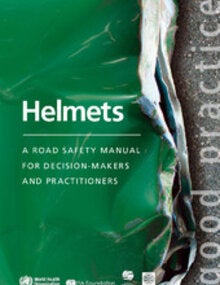Many countries around the world are facing the problem of a rapidly rising number of people injured or killed while riding two-wheelers – motorcycles and bicycles. A large proportion of the deaths and severe injuries result from injuries to the head. Helmets are effective in reducing the likelihood of head injuries, as well as their severity. Increasing helmet use in a country is thus an important way of improving road safety.
This manual provides practical advice to road safety practitioners on how to achieve a much higher proportion of users of two-wheeled vehicles wearing helmets. It follows on from the World report on road traffic injury prevention, which described evidence that setting and enforcing mandatory helmet use is an effective intervention for reducing injuries and fatalities among two-wheeler users. The manual is one of a series of documents produce by an informal consortium (WHO, the Global Road Safety Partnership, the World Bank, and the FIA Foundation for the Automobile and Society) that aims to provide guidance to countries on how to implement some of the recommendations identified within the World Report, and thus improve their overall road safety record.
The manual is for use in countries that want to improve the rates of helmets use among users of two-wheelers, locally or at national level. It is targeted at governments, nongovernmental organizations and road safety practitioners. As well as providing the necessary background evidence that will be useful to anyone starting a helmet programme, it provides technical advice on the steps needed to assess the helmet situation in a country, on how to design and implement a helmet use programme in response to such an assessment, and on the need to evaluate the programme so that the impact of what has been implemented can be assessed, and so that the programme can be improved accordingly.
Other available languages:
|

